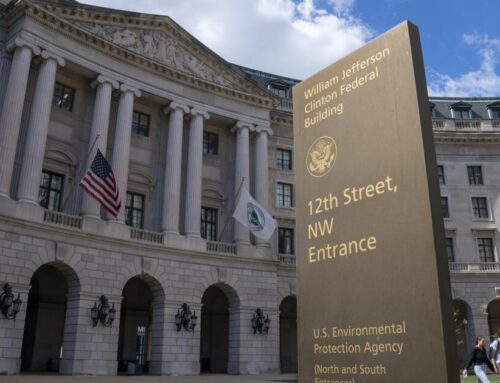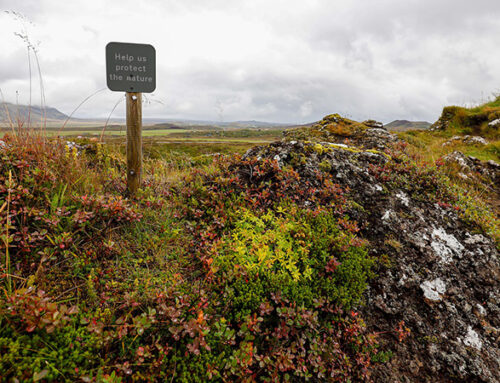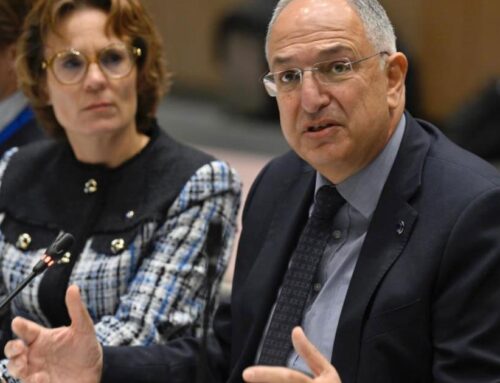NY environmental groups focus efforts on pushing renewable energy, fighting pipeline
September 30, 2025
There’s probably never been a more bleak moment for New York environmentalists than the one the state is currently in.
President Donald Trump is rolling back offshore wind and solar projects. Gov. Kathy Hochul’s administration is promoting new gas infrastructure despite a landmark state law phasing out fossil fuels. Extreme heat and flooding batter the city every year and now, wildfires from Canada are hurting the city’s air quality.
But Climate Week in New York, which included more than 1,000 events last week and drew more than 100,000 attendees, was not a funereal affair. Instead, environmentally minded New Yorkers seem focused on the changes they can make locally rather than worrying about the federal roadblocks on funding and policy.
The buzz and discussions among the scores of attendees Gothamist spoke to during the week centered on how to make progress around seemingly insurmountable obstacles. Activists, innovators and officials were still hopeful that they could move forward despite a lack of support from the federal government.
“ Everybody is talking about how here in this country we need to keep moving forward despite. anything that Trump is trying to do, so we need to go it alone as states,” state Sen. Liz Krueger said. “Instead of saying, ‘Well, the feds won’t do it, the feds won’t let us do it.’ We have to become more and more aggressive and innovative about how we move our climate agenda forward through state laws and state policies.”
Here are the most-talked about strategies discussed during the half-time huddles at coffee breaks, happy hours and healing circles.
Build more solar, think beyond offshore wind power
New York has a goal under its state climate law to make a complete renewable energy transition by 2040. The state was depending heavily on offshore wind projects to reach that goal, but the Trump administration has put a block on any new offshore projects for now. Well, here comes the sun.
During Climate Week, Krueger introduced a bill called the Sunny Act, which subsidizes residential solar panels that can be plugged in and put on terraces and balconies. The panels are widely used by apartment dwellers in Europe. The units run about $350 and require no professional installation. There are also other affordable and compact options for solar-powered air condition units, solar window panels and panels that hang below windows. These small solutions adopted collectively can shave peak demand as well as save ratepayers money.
”It’s a no brainer. It can bring a whole new universe of urban lower-income people into the opportunity for solar and reduce their monthly utility bills,” Krueger said.
The state has been largely successful in deploying solar power, and it’s on track to build 10 gigawatts of distributed solar by 2030. The New York Power Authority released a draft plan last month to build 7 gigawatts of solar by the end of the decade as well as battery storage.
There are also other forms of clean energy for the state to consider. The subway system is piloting a geothermal program to keep its platforms cool. The state has also committed to building at least 1 gigawatt upstate in nuclear power.
”If we want energy security, if we want energy independence, if we want stable prices, renewables are really the answer,” said Julie Tighe, president of the New York League of Conservation Voters.
In the next couple of years, the offshore wind projects in the Atlantic Ocean near Long Island will come online with enough power to over 1 million households. By next spring, transmission lines will provide 20% of New York City’s power demands with clean energy from Quebec. Many attendees were optimistic that the federal stall on offshore wind island and cuts to renewable energy funding are temporary.
Execute the State Climate Law
Climate week attendees say that the state needs to enacting the laws already on the books — namely the Climate Leadership and Community Protection Act, which was passed with great fanfare in 2019.
Six years later, however, it remains unenforced and vague. The law ultimately calls for an 85% reduction in climate pollution by 2050. To enforce these emissions limits, the state is required to roll out a cap and invest program, which charges polluters a financial penalty for not reducing emissions. The money collected would go toward advancing the energy transition and electrification.
”We really need to implement cap and invest, that’s where the real money will be generated to decarbonize our economy,” state Sen. Pete Harckham said. “ Cap and invest is how we are going to pay for things that were laid out in the climate action plan.”
The deadline for cap and invest was about two years ago, and the program is still delayed. In March, environmental groups filed a lawsuit against the state for failing to enact the state climate law. Hochul’s office declined to comment due to pending litigation.
Harckham said cap and invest can generate $3 billion-$10 billion annually. Currently, the program has been paused indefinitely with no clear timeline for implementation.
Reject the NESE pipeline
The once dead Northeast Supply Enhancement pipeline, or NESE pipeline, got a second life earlier this year thanks to federal support. It has since been moving through approvals at a fast clip. Finding ways to slow down or even stop the process was a big Climate Week topic.
”The pipeline was passed through the Public Service Commission, but the timing of it on literally the eve of climate Week is telling that this is the legacy and the foot we’re putting forward,” said Vanessa Fajans-Turner, executive director of Environmental Advocates NY. ”It’s not the kind of signal for New York’s future that the previous climate weeks have ushered in.”
Advocates want the review process to slow down and include more public input and hearings, but ultimately Fajans-Turner wants the state to reject the pipeline project like it did nearly a decade ago, calling it a clear violation of the state climate law that requires retirement of the gas system by 2050.
“The governor has made it clear that while she is open to natural gas and any other energy plans that will keep the lights and heat on for New Yorkers, all proposed projects must be reviewed impartially by the required agencies to determine compliance with state and federal laws,” Ken Lovett, Hochul’s senior communications adviser on energy and environment, wrote via email.
The arguments for natural gas expansion include reliability issues and increased power demands, but advocates pointed to new renewable energy sources coming online in the next couple of years, such as the Champlain Hudson Power Express, which will assuage demand downstate.
According to the state grid operator’s report, demand is expected to grow 50%-90% over the next 20 years due to electrification and energy-intensive industries such as AI and data centers.
Raya Salter, an environmental lawyer, said continued investment in the fossil fuel system will hike costs on ratepayers who bear the costs of infrastructure and keep the state reliant on natural gas, diverting resources that could be used for emissions-free electricity.
Search
RECENT PRESS RELEASES
Related Post



